한식 읽기 좋은 날
Vol 41. Cold Nourishing Food
The Essence of Splendid Flavor Found in Jinju Summer
The first place I went on a trip with my mother was “Jinju”. It was just around this time of the year. My mother smiling broadly against the dark green background in the Gyeongsangnamdo Arboretum in Jinju remains as an unfamiliar photo. I was browsing through our Jinju photos again when my mother said out of nowhere, “The Jinju naengmyeon we had at that time was really good.”
Article. The Editorial Room Photo. Kim J
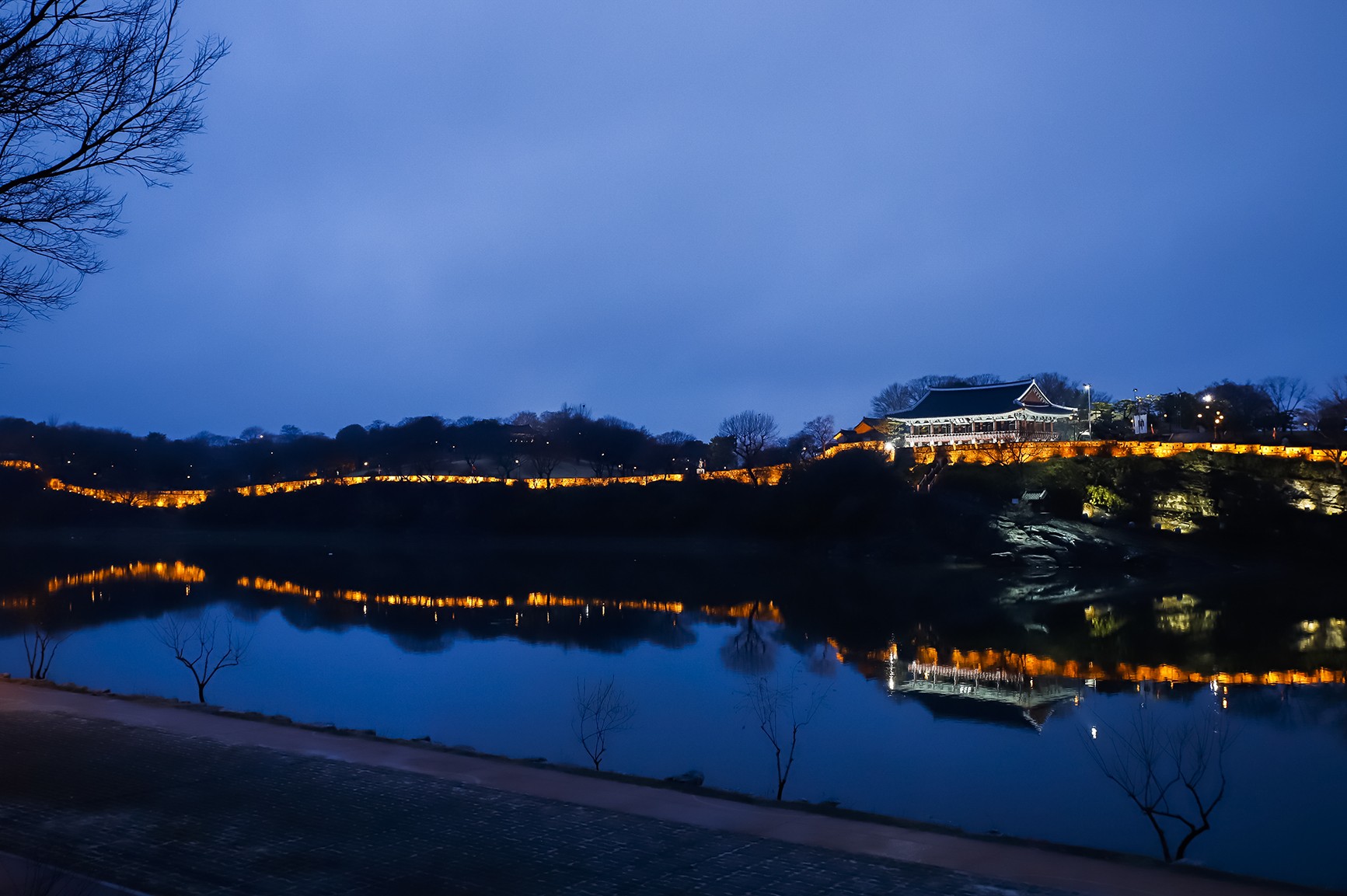
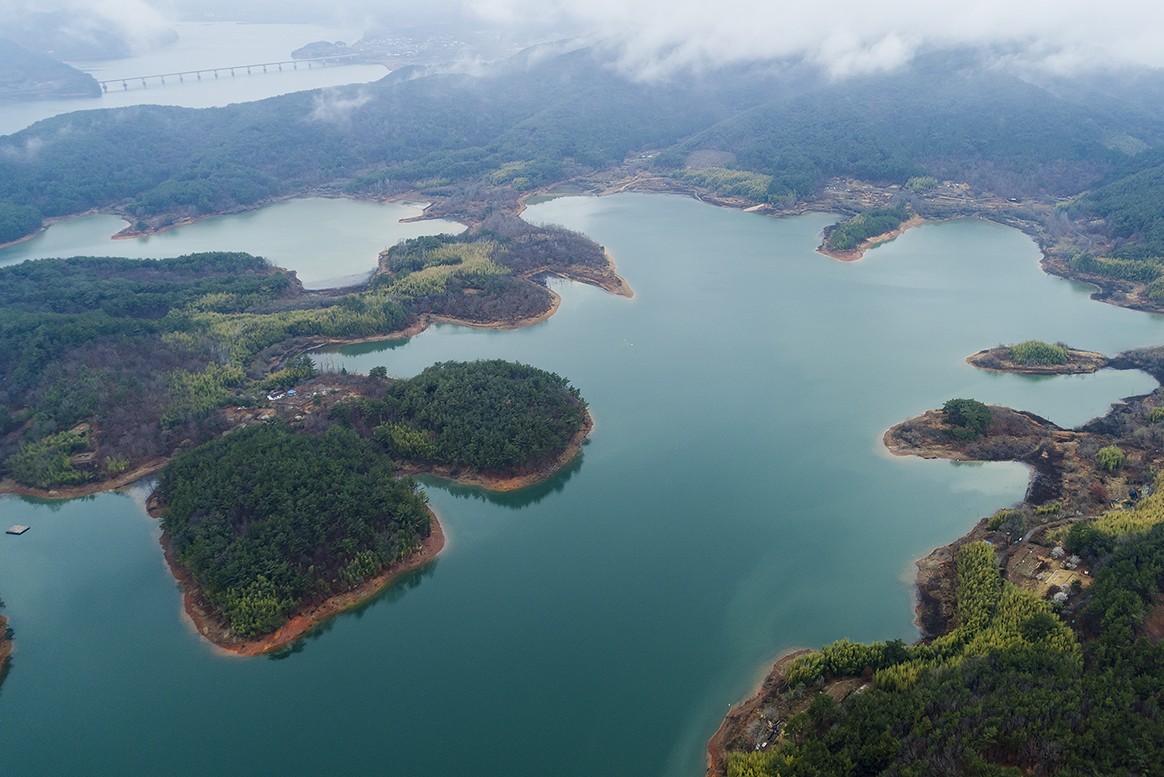
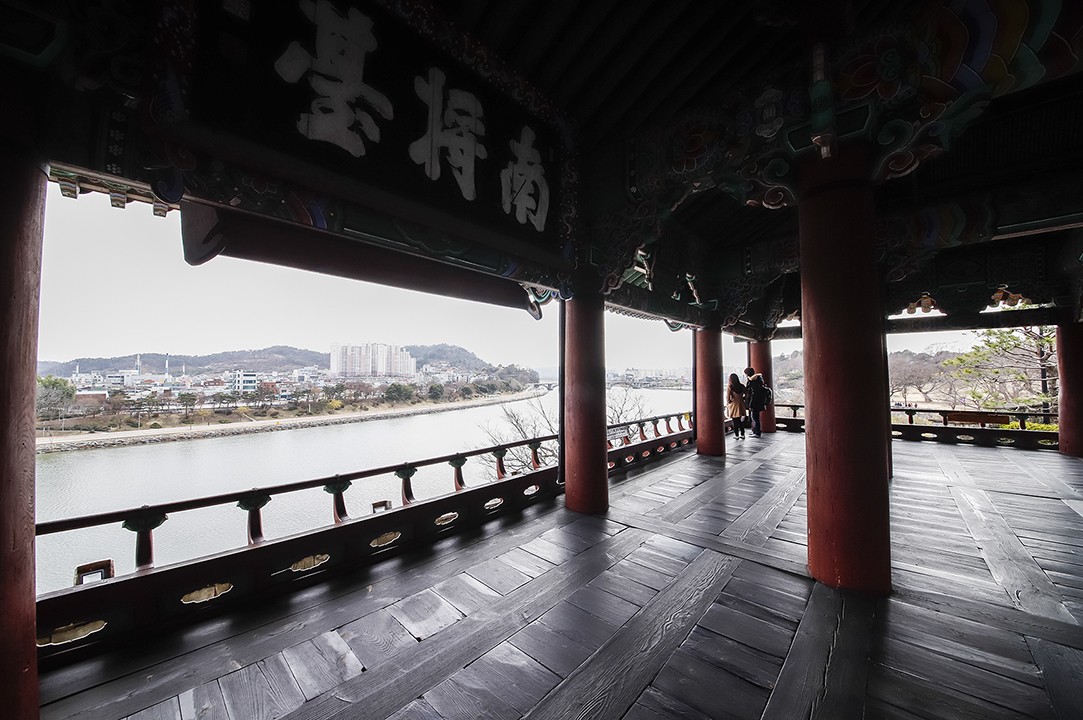
Jinyangho Lake Where Milky Fog Rises
Jinyangho Lake is the place where I felt rewarded after going through the early morning wind of Jinju. It is an artificial lake created in 1970 when the Namgang Dam was built by blocking the Namgang River. It is where the Deokcheongang River and the Gyeonghogang River meet. It is also the only artificial lake in western Gyeongnam.
As one of the eight scenic spots in Jinju, this place is famous for its beautiful fog in the morning and the sunset in the evening. I still feel overwhelmed when I think about the fog I encountered after climbing the Wishing Stairs(Year Stairs) connected to the Jinyangho Lake Observatory.
The only zoo in Gyeongnam, a family rest area, an amusement park, a forest walk park, Namgang Dam Water Culture Center, and a children's transportation park are all located around Jinyangho Lake, making it the perfect family destination.
Reasons to Visit Jinju in Midsummer
Jinjuseong Fortress is the place where I felt rewarded for visiting Jinju under the summer sun. It is a destination that cannot be missed while touring Jinju, but I actually have conflicting emotions over it because of what the locals said: “It is better to come during the Yudeung Festival in October” and “It is more beautiful at night”. However, when I climbed the Jinjuseong Chokseongnu Pavilion, there were more than enough reasons to visit Jinjuseong even in midsummer.
Sitting in a wooden tiled house with an octagonal roof, 5 rooms in the front, and 4 rooms in the side attic, and looking at the gently flowing Namgang River in a breeze, I could feel the faithfulness and fidelity that is “greener than a kidney bean flower and redder than a poppy flower on water”. With that upright loyalty, the heat of a midsummer day had completely disappeared.
“Jinjuseong Fortress” Where the History of Jinju Comes Alive
The history of Jinju is contained in Jinjuseong Fortress, which boasts of a wonderful natural scenery, or a natural fortress on the red cliff near Jinju’s Namgyeong side. Hoguksa Temple, Changnyeolsa Temple, Uigisa Shrine, Bukjangdae Command Post, Seojangdae Command Post, Chokseongmun Gate, and Gongbukmun Gate are being surrounded by a 1,760-meter-long fortress. It is also the place of the spirit of Jinju, the land of loyalty.
An event that cannot be overlooked when talking about the ups and downs of Jinju’s history is the “Battle of Jinju” during the Imjin War in 1952. You can read the diary of the day General Kim Si-min defeated 20,000 Japanese soldiers with 3,800 soldiers at Jinjuseong Fortress. Jeongchungdanbi Monument in Chokseok Plaza, Memorial Stone for the Two Loyal Generals, and Monument for General Kim Si-min commemorate the martyrs, and the Memorial Altar for the Battle of Jinjuseong Fortress and the Statue of General Kim Si-min protect the significance of the day.
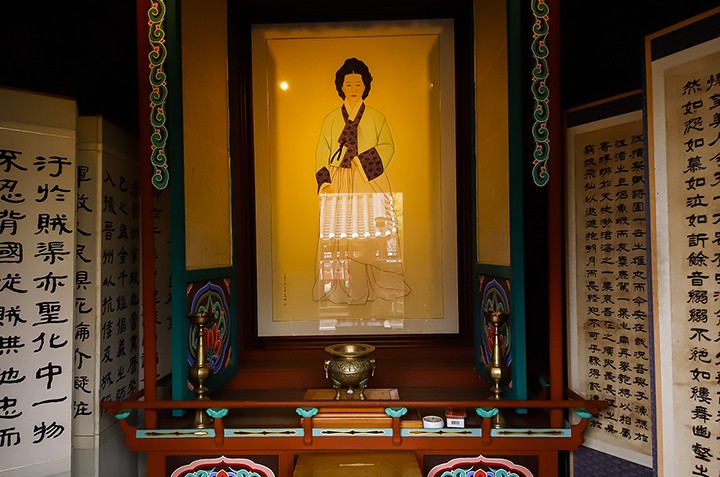
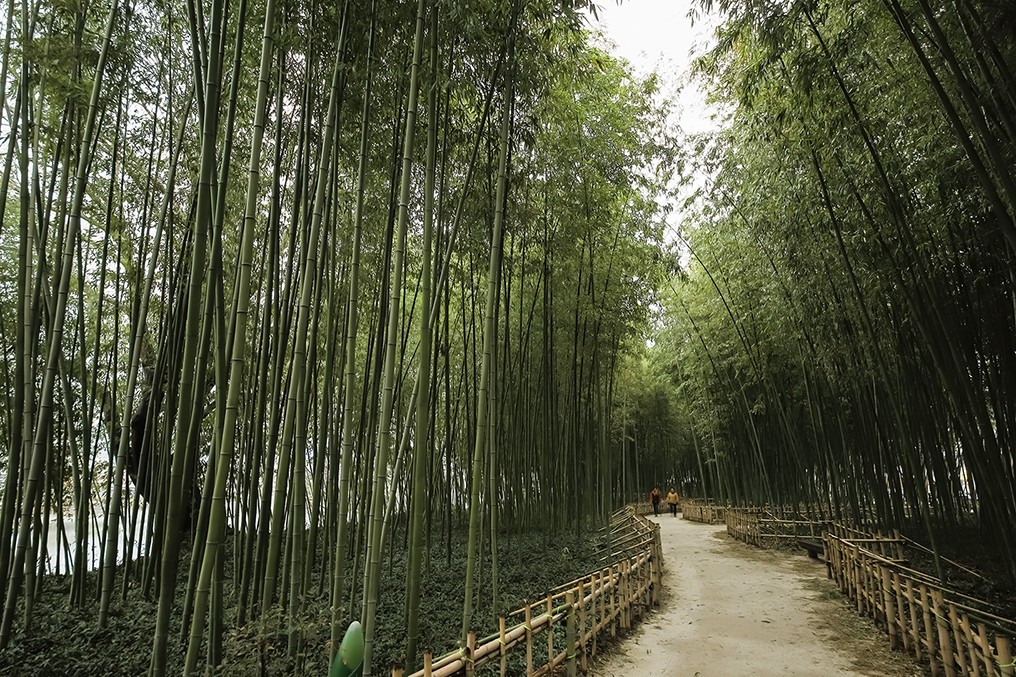
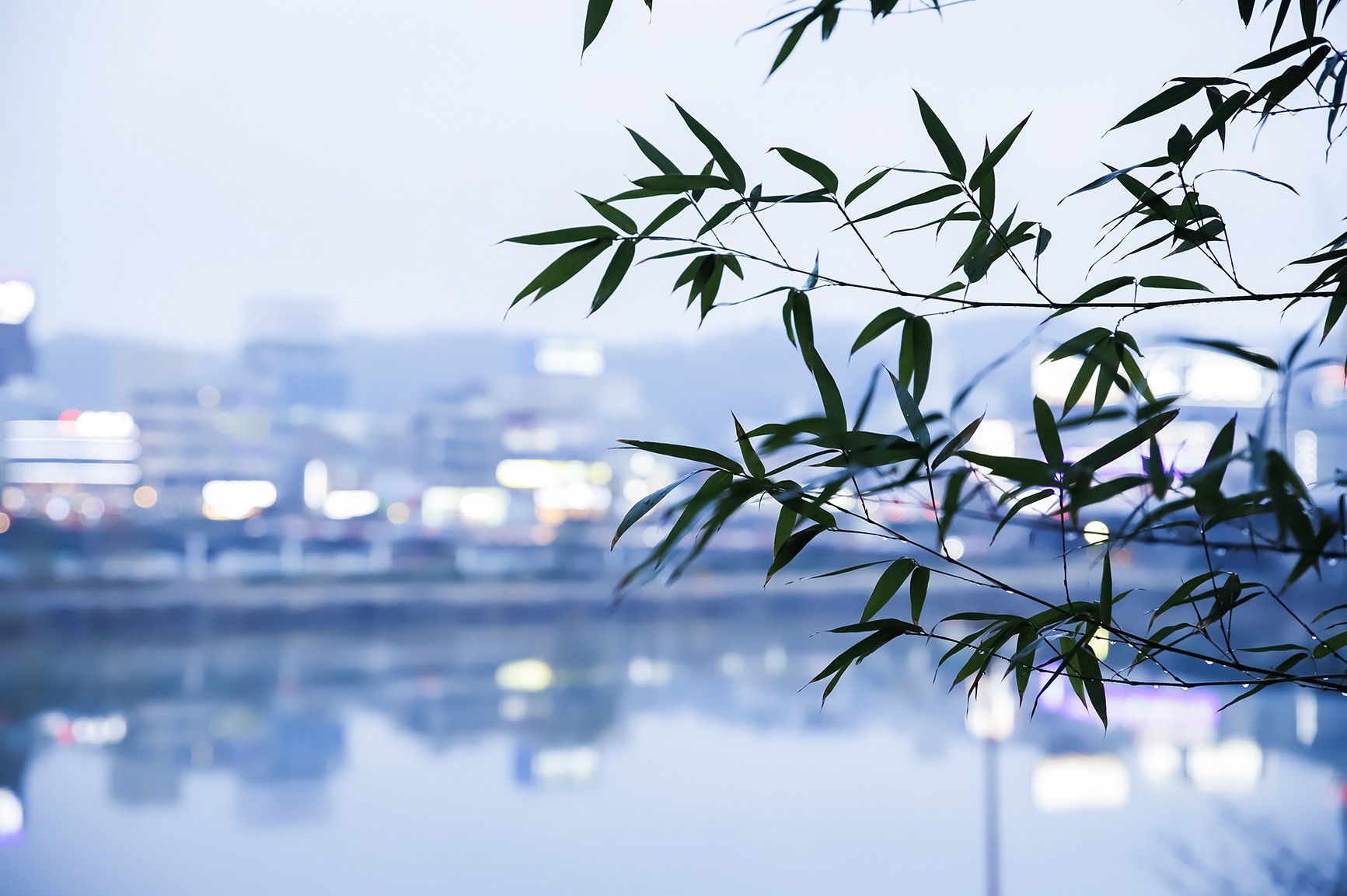
Chokseongnu, Uiam and Nongae
Chokseongnu Pavilion is a must-see attraction at Jinjuseong Fortress. Built in the 14th year of King Gongmin of Goryeo(1365), Chokseongnu is so beautiful that it is counted as one of the three great pavilions in Korea. There is a theory that it was built in 1241, the 28th year of King Gojong of Goryeo. Its appearance in harmony with the Namgang River is reminiscent of an ink painting. It is absolutely beautiful during the day, and the beauty shines more at night when the lights are on.
The beauty of Chokseongnu is not limited to its appearance. After losing to the Japanese in the 2nd Battle of Jinju during the Imjin War, there is a beautiful loyalty handed down from Uiam(the Rock of Righteousness), a rock measuring 3.65 m x 3.3 m, from which Uigae(Righteous Courtesan) Nongae jumped down while hugging a Japanese commander.
To see Uiam, I had to carefully descend the steep stairs after passing through the Ammun Gate beneath Chokseongnu Pavilion, and I was amazed at how great the loyalty of Uigae Nongae was. I found the story that about Uiam, who was originally called “Wiam(危巖)” as a dangerous rock, is particularly moving. When I finally met the righteous figure of Uiam, it felt like it was engraved with a spirit that could not be expressed with the word “noble”.
The History and Taste of Jinju Alive in Daily Life
Jinjuseong Fortress, which contains the history of Jinju, is also famous as a walking spot for the Jinju locals. There were many elderly people cooling off the heat of the day while looking at the Namgang River from Chokseokru Pavilion. This seemed special because I realized that it was the living and breathing history to have it in your daily life and take it out anytime you want, rather than placing it somewhere far and taking time out to visit.
This is also the reason I became curious about the lives of Jinju people, and that is why I headed to Jinju Central Market by passing the Insa-dong Antique Street near Jinjuseong Fortress.
On Insa-dong Antique Street, which is near Gongbukmun Gate, the main entrance of Jinjuseong Fortress, there are various stores dealing with antiques, such as ancient books, historical records, paintings, calligraphy works, rubbing, ceramics, and sculptures. It is also called “Saejeumun Street”.
Passing through Insa-dong Antique Street, I arrived at Jinju Yudeung Central Market, which is a traditional market. In connection with the Jinju Namgang Yudeung(oil lantern) Festival, the representative festival of Jinju, the name was changed from “Central Market” to “Yudeung Central Market”. Established in 1884, there are many long-established stores here, and they also have the unique taste of Jinju, such as the “steamed buns topped with red bean juice”.
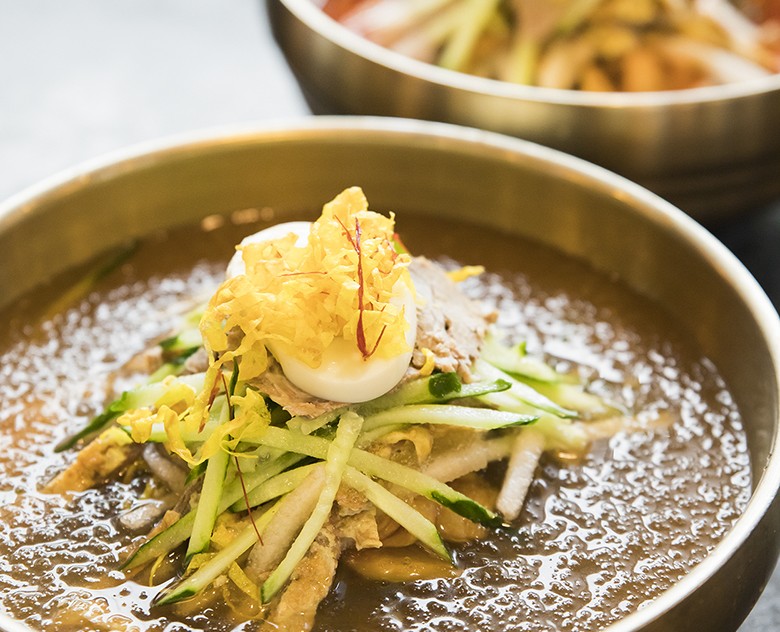
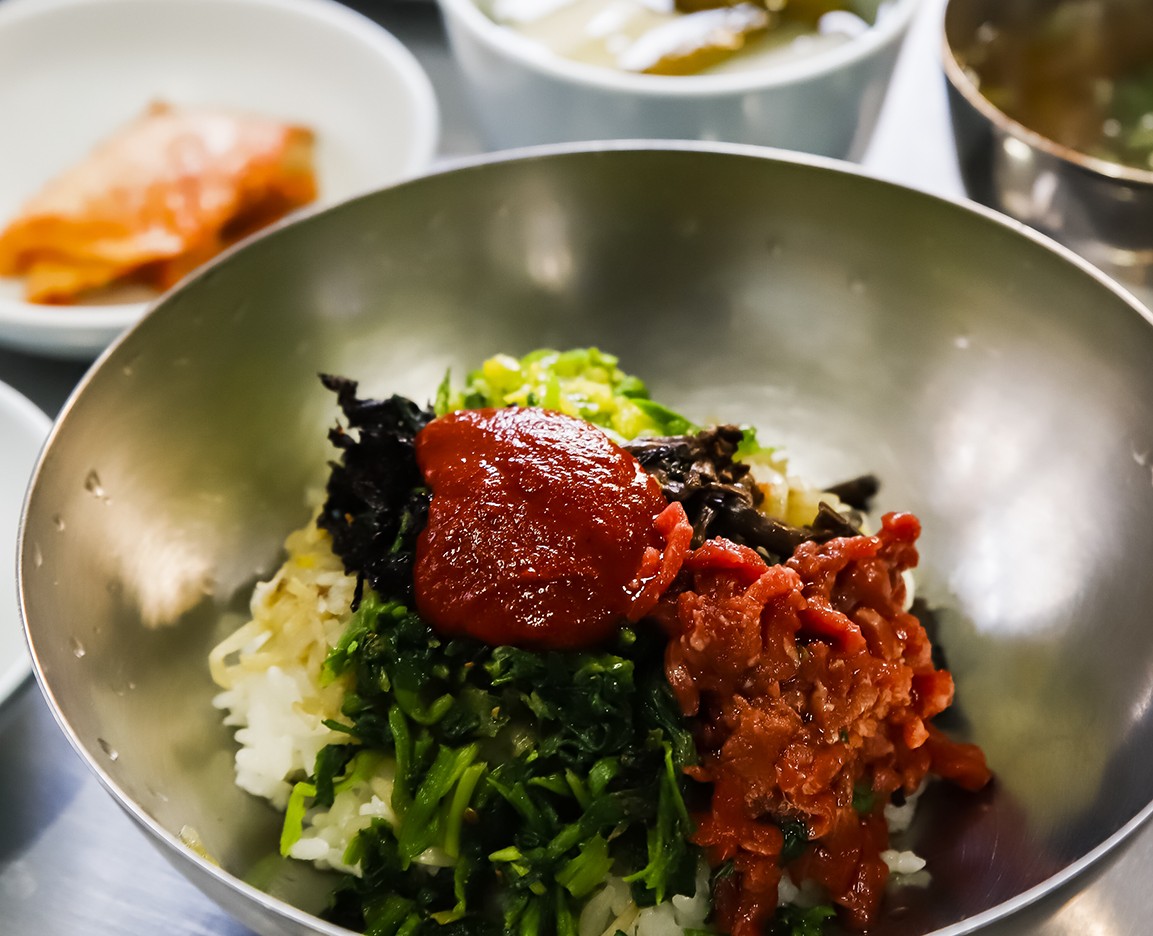
“Jinju Naengmyeon”, the Essence of Jinju Summer
On one summer day, I was able to find the reward of a trip to Jinju in the taste of Jinju, which boasts of a gorgeous flavor and charm.
The refreshing taste of Jinju naengmyeon, which eliminates the heat from inside, was the first of the splendid flavors I have tasted in Jinju. Jinju naengmyeon boasts of a fairly long history. In the mountainous region near Jinju, buckwheat, the main ingredient of naengmyeon, was popular. It is said that buckwheat noodles have been eaten in Jinju since the ancient times. One of them, Jinju naengmyeon, is said to have been enjoyed by noble families, Yangbang family, and the houses of courtesans as a palate cleanser after drinking alcohol. However, it wasn’t until the 2000s that Jinju naengmyeon became well-known to the public as it is today.Its existence was cut off during the Japanese colonial period and the Korean War, but it was restored to its present form in the 2000s after it was revealed that “Pyeongyang naengmyeon and Jinju naengmyeon are considered the best among naengmyeong dishes” in the book <Chosun Folklore Traditions> published in North Korea in 1994
Jinju naengmyeon is distinguished by using seafood, such as anchovies, clams, dried mussels, and dried pollack, in its broth, and making yukjeon(pan-fried battered beef), slicing it, and adding it as a garnish. The harmony of buckwheat noodles and yukjeon in a refreshing broth not only stimulates my eyes, but also captures my palate.
The Essence of Splendid Jinju Flavor, “Jinju Bibimbap”
Jinju bibimbap is the second splendid flavor of Jinju. It is made of finely chopped raw beef rump that is seasoned with sesame salt, garlic, and sesame oil, and seven ingredients around the beef. It is nicknamed as flower rice or chilbohwaban(七寶花盤: a plate of flower with seven ingredients) for having a form like a flower. It is also unusual that seonjitguk(beef blood soup) is served as a soup, which is a special combination of flavors that can be tasted in Jinju, where the beef market was developed. It is also characterized by the use of a special gochujang(red chili paste) called yeotkojang.
Meanwhile, behind the splendid taste and beauty of Jinju bibimbap, there is a history of it being a battle food during the Imjin War. Bibimbap, a side dish and rice in one bowl, was the best battle food, and Jinju’s yukhoe(raw beef) bibimbap was made with beef to supplement the nutrition of the namul(seasoned vegetables) rice.
“Jinju(pearl)” is full of splendor in its name. The trip to Jinju on a midsummer day, where I discovered its splendor and the other charm and taste that splendor holds, left a pretty strong impression. In particular, the splendid summer flavors of Jinju, which I enjoyed that day, still linger in my memory.










